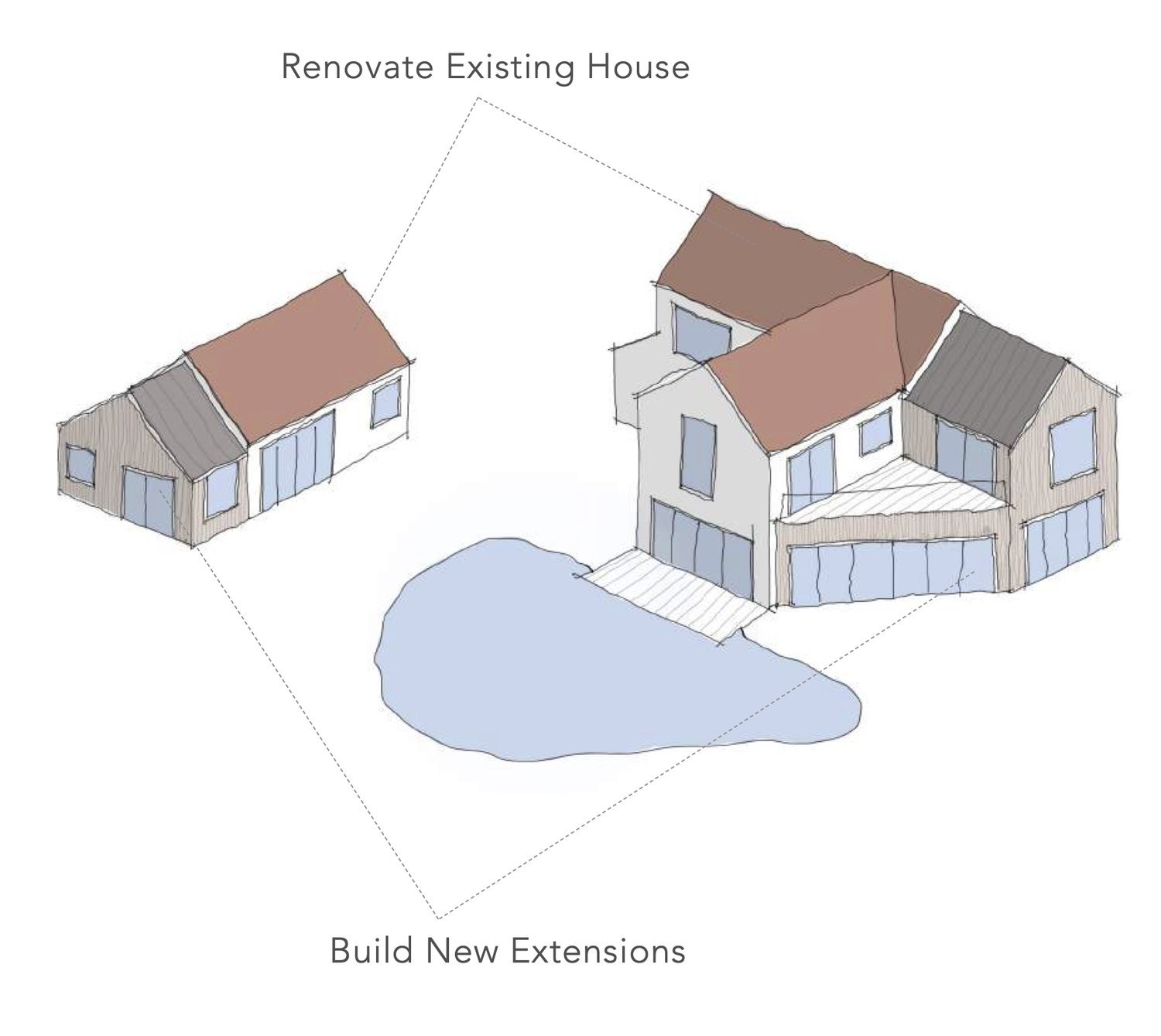Replacement Dwellings in the Greenbelt and Rural Locations
May 27, 2022
We often work with clients who want to build a new home in the green belt. As the construction of new buildings is highly restricted this can be a challenge! One route to achieving this dream is via the 'replacement dwelling' approach.
The National Planning Policy Framework states that;
‘A local planning authority should regard the construction of new buildings as inappropriate in the Green Belt. Exceptions to this are: ...
c) the extension or alteration of a building provided that it does not result in disproportionate additions over and above the size of the original building;
d) the replacement of a building, provided the new building is in the same use and not materially larger than the one it replaces'
We are currently working on a project in North Somerset and exploring whether the clients brief can best be met with; extensions and alterations, a radical retrofit (which would also be considered to be extending and altering) or by replacing the dwelling entirely, as shown by the drawings below - which is your favourite option?
An important consideration when building in the green belt is maintaining the openness of the countryside. This means that any proposals which are considered to harm the 'openness' will be refused. Helpfully many local authorities will specify what additional size they consider to be harmful. North Somerset stipulates for both extensions and replacement dwellings that they will not normally be regarded as disproportionately large provided they do not exceed an additional 50% of the floor area of the original building, so the finished house for either option could be up to 150% of the area of the original.
David Caldwell, Project Architect.

